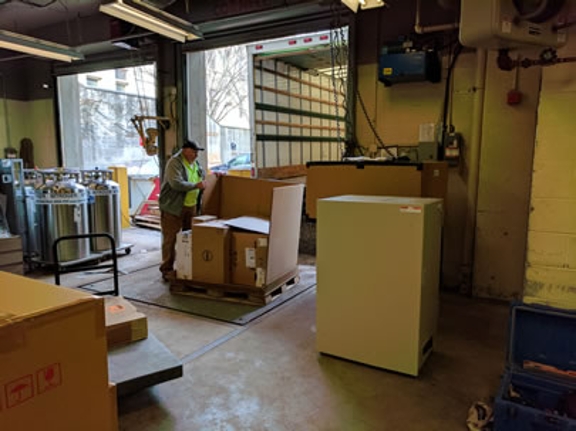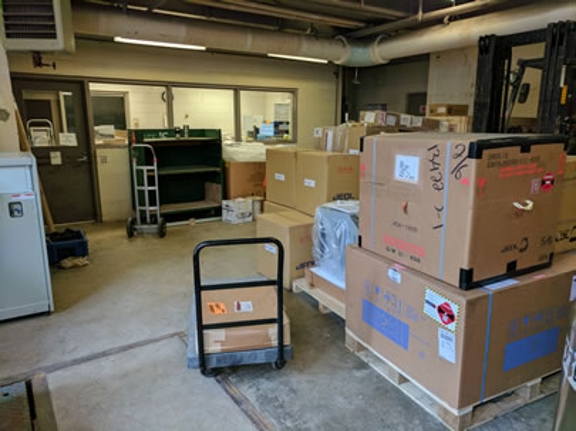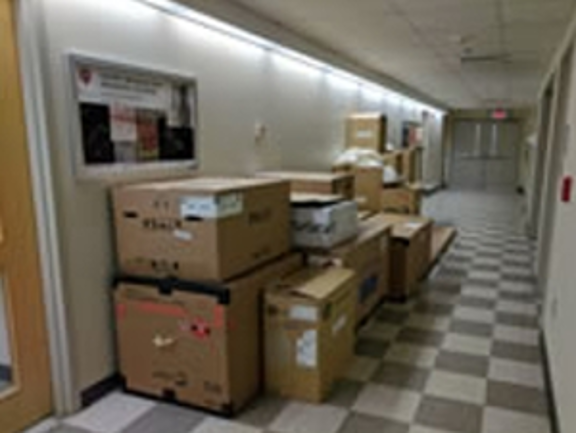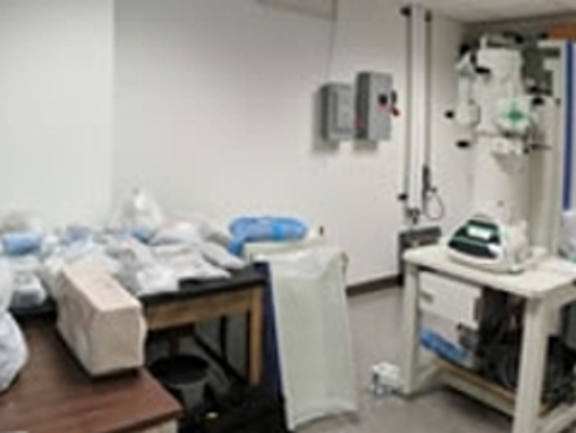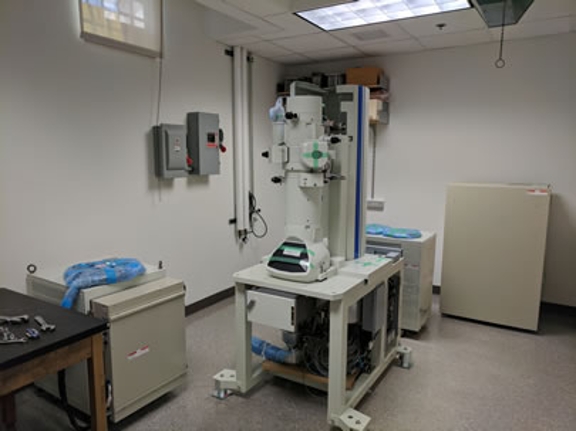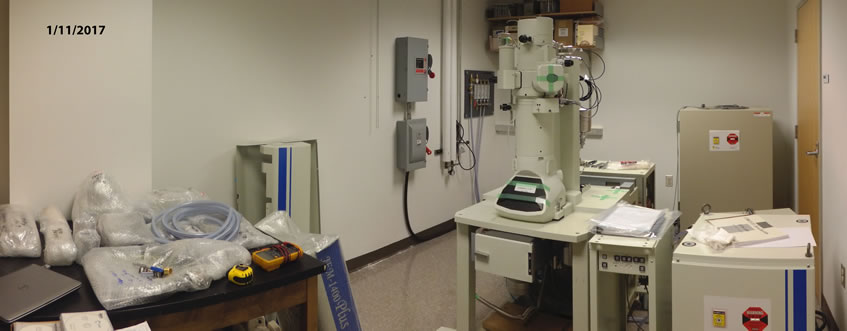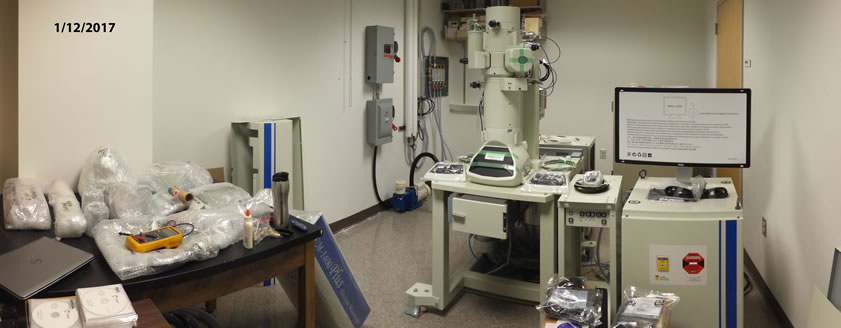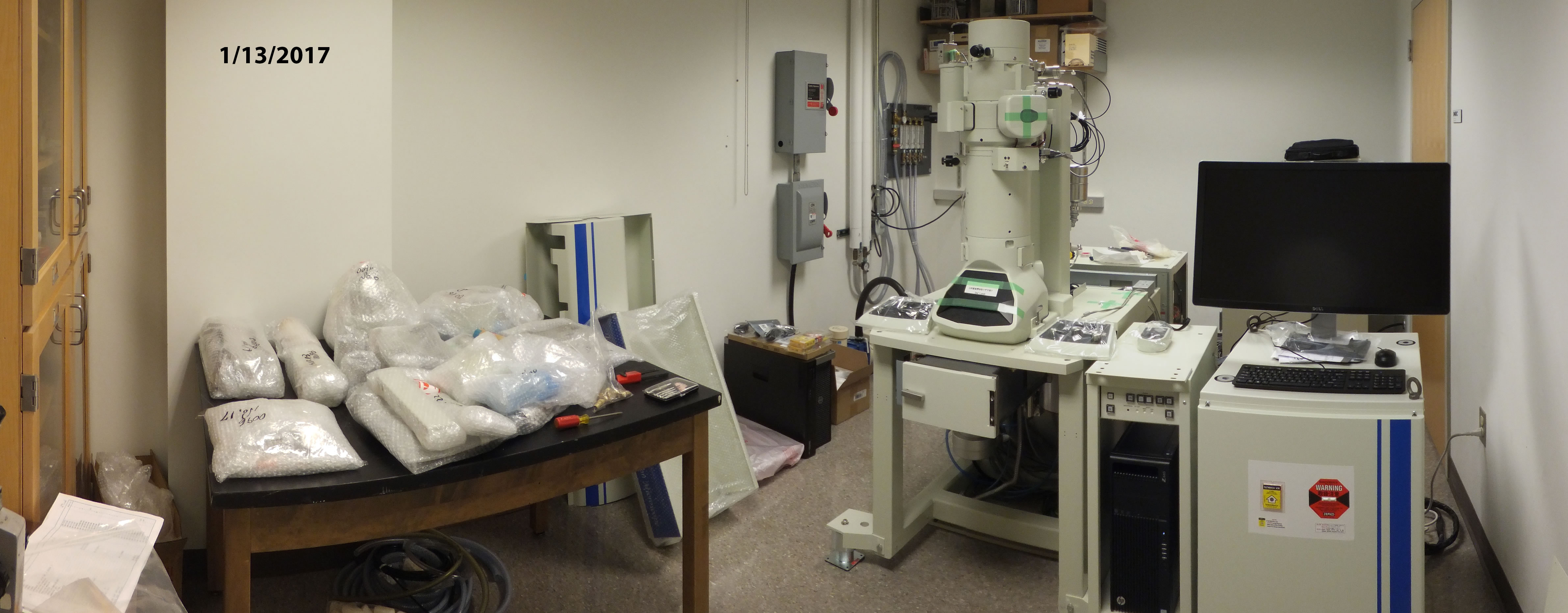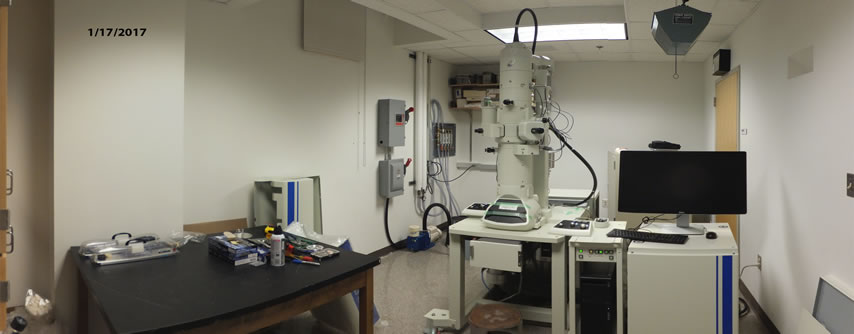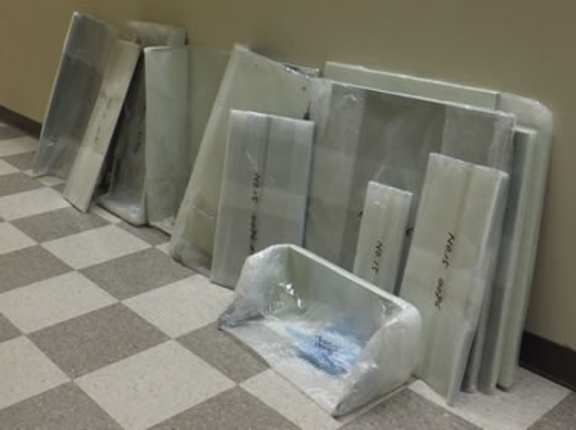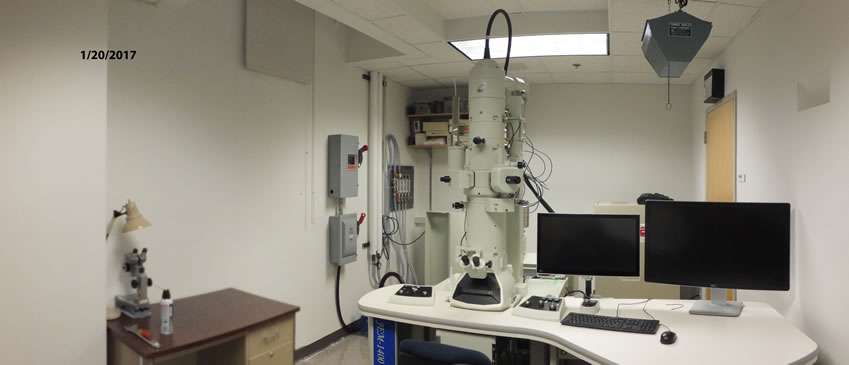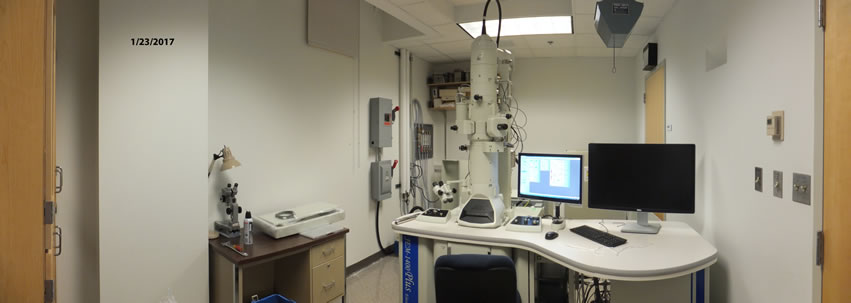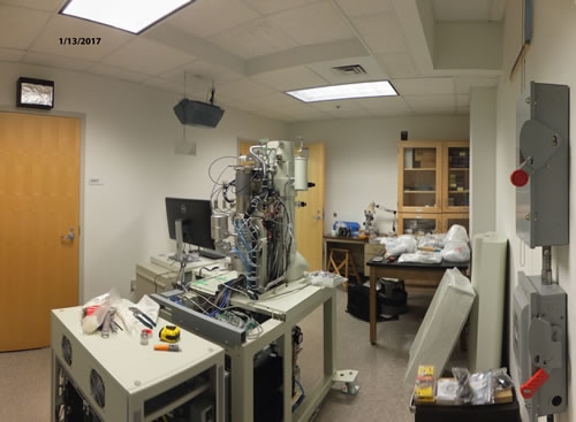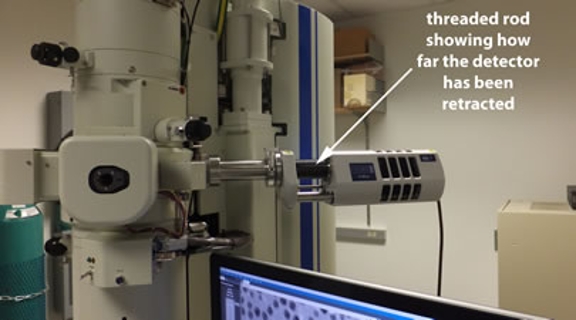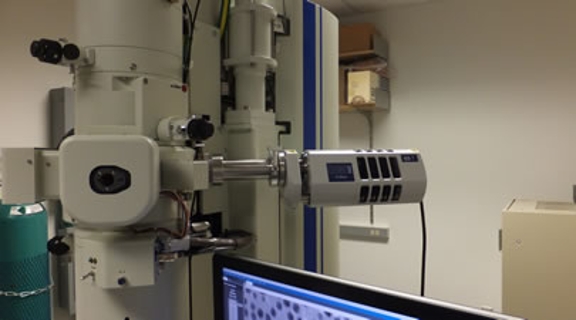Even as soon as the next day, the 1400plus was beginning to take shape.
There were lots of changes on the next day, including the installation of the panel for the chilled water in the corner of the room (just to the left of the column) and the connection of some water lines to it, and the change in location of one of the electrical boxes (also to the left of the column).
By the 4th day, all the water lines were connected, the Haskris water chiller was ready to power on and the main computer was ready to connect.
On day 5, Dave turned on the Haskris water chiller and was ready to power on parts of the 1400plus. However, the water in the chilled water lines looked dirty (it had been circulating through the JEOL JSM 5800LV for ages and then sat unmoving in the lines for a month after the SEM was decommissioned) and he decided to flush the water lines a time or two before putting any of the chilled water through the new microscope.
We also set in place a time-lapse camera (with the gracious help of Prof. Roger Hangarter) to monitor the assembly of the 1400plus from this point onwards. It turned out that the really major changes to the room and the instrument had already happened and there was not enough change to make it worthwhile for Roger to process the images from the camera. According to Roger, that's one of the issues with all time-lapse work: one can't tell whether it was worth the effort until it's all over.
After flushing the chilled water lines and re-filling the Haskris water chiller several times, Dave powered up the 1400plus for the first time. He needed to connect various vacuum gauges in order to keep the system running continuously, and once that was done, he attached the electron gun to the top of the column and pumped down the entire microscope. He also ran the high tension cable between the gun and the HT tank (which sits directly behind the column in this instrument).


